If you’re seated while reading this, it’s time to stand up! Well, keep reading, but consider standing. I’ll provide desk exercises later on, and you’ll definitely want to try them out. Why? Because if you’re like many people today, you’re spending too much time seated at your desk, buried in emails or scrolling through social media. Unfortunately, our modern lifestyles often involve prolonged sitting, which can have serious health consequences. According to the World Health Organization, lack of physical activity contributes to millions of deaths annually, increasing the risk of diabetes, heart disease, and muscle and bone weakness. Even regular exercise might not fully counteract the harmful effects of excessive sitting.
Sitting Too Much: A Weighty Issue
Our modern lifestyle often revolves around sitting. On average, we spend about 9.5 hours each day seated, surpassing even our sleep time. Consider a typical workday: commuting in a car or public transport, sitting at a desk for hours, eating lunch at the desk, and then returning home for more sitting. The cumulative effect of prolonged sitting isn’t just detrimental to our health; it’s making us gain weight. Research suggests that excessive sitting is associated with an increased risk of obesity. However, there’s hope. By incorporating more movement into our daily routines, we can combat the weight gain linked to sedentary behavior. For instance, one study found that obese individuals who increased their daily physical activity by just 2.5 hours could burn an additional 300 calories daily. Let’s explore how we can break free from the weighty consequences of sitting too much.

Desk Stretches for Workday Wellness
1. Desk Yoga: Rubber Neck

Slowly and gently tilt your head to one side, aiming to bring your ear toward your shoulder while keeping your shoulders relaxed and squared. Feel the stretch along the side of your neck and hold this position for a few deep breaths, allowing the tension to release gradually. Be mindful not to force the stretch; instead, let your head sink naturally into the stretch. After holding for a few breaths, slowly return to the starting position and repeat on the opposite side to ensure balanced stretching and tension relief.
2. Reach for the Sky

Interlace your fingers, ensuring a secure grip, and extend your arms overhead in a smooth, controlled motion. As you reach toward the ceiling, imagine lengthening your spine and creating space between each vertebra. Focus on keeping your shoulders relaxed and away from your ears to prevent unnecessary tension. By maintaining an open chest and upward gaze, you can maximize the stretch through your arms, shoulders, and upper back.
3. Neck Mobility: Look Around
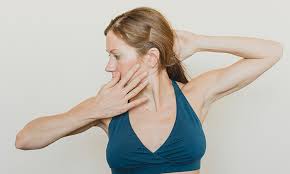
Gently rotate your head to one side, aiming to bring your chin toward your shoulder while maintaining a tall, upright posture. As you turn, feel the gentle stretch along the side of your neck and the upper trapezius muscle. Avoid forcing the movement and instead allow your head to rotate naturally until you feel a comfortable stretch. Hold this position for a few seconds, focusing on breathing deeply and evenly to enhance relaxation. After a brief pause, slowly return your head to the center and then repeat the movement on the opposite side. This gentle rotation helps alleviate tension in the neck and shoulders, promoting flexibility and relieving stiffness.
4. Bobblehead Stretch

To perform the “Chin to Chest” exercise, start by sitting upright in a comfortable position with your feet flat on the ground and your hands resting on your thighs or knees. Take a deep breath in, and as you exhale, slowly lower your chin towards your chest, feeling a gentle stretch along the back of your neck. Hold this position for a moment, allowing your neck muscles to relax and release any tension. Then, gently roll your head from one shoulder to the other in a smooth, circular motion. As you roll your head, focus on maintaining a slow and controlled movement, avoiding any sudden or jerky motions. Continue rolling your head from side to side for several repetitions, allowing each movement to help further loosen and stretch the muscles in your neck.
5. Shoulder Shrug
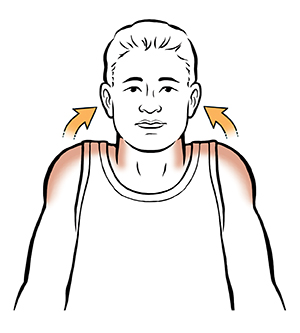
Raise your shoulders upward towards your ears, focusing on contracting the muscles in your upper shoulders and neck. Hold this position briefly to maximize the stretch, then gently release and lower your shoulders back down to their starting position. Repeat this movement several times, allowing each repetition to gradually loosen and relax the muscles in your shoulders and upper back.
6. Open Your Chest
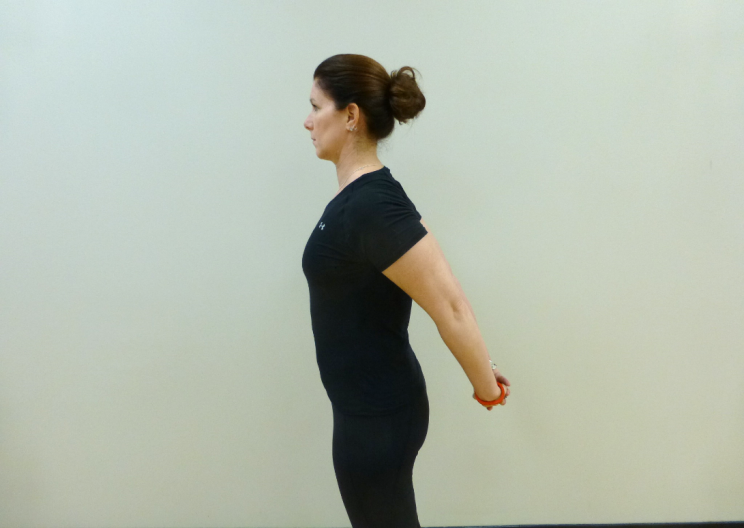
Bring your hands behind your back, intertwining your fingers, and pressing your palms together. As you sit up tall, focus on elongating your spine and opening your chest towards the ceiling. Hold this position for a few deep breaths, feeling the stretch across your chest and shoulders. This gentle stretch helps to counteract the forward hunching posture often associated with prolonged sitting, promoting improved posture and relieving tension in the upper body.
7. Seated Toy Soldier
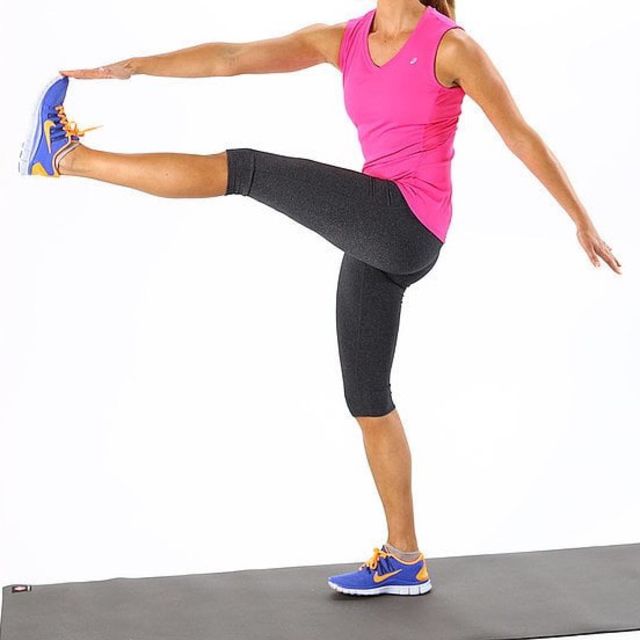
Extend one arm overhead, reaching as far as you can to the side while simultaneously straightening the opposite leg and reaching towards your foot. Aim for a gentle stretch along the side of your body as you reach. Alternate sides, performing 8–10 repetitions on each side to enhance flexibility and improve range of motion. This dynamic stretch engages multiple muscle groups, helping to improve overall flexibility and mobility.
8. Knee Hug
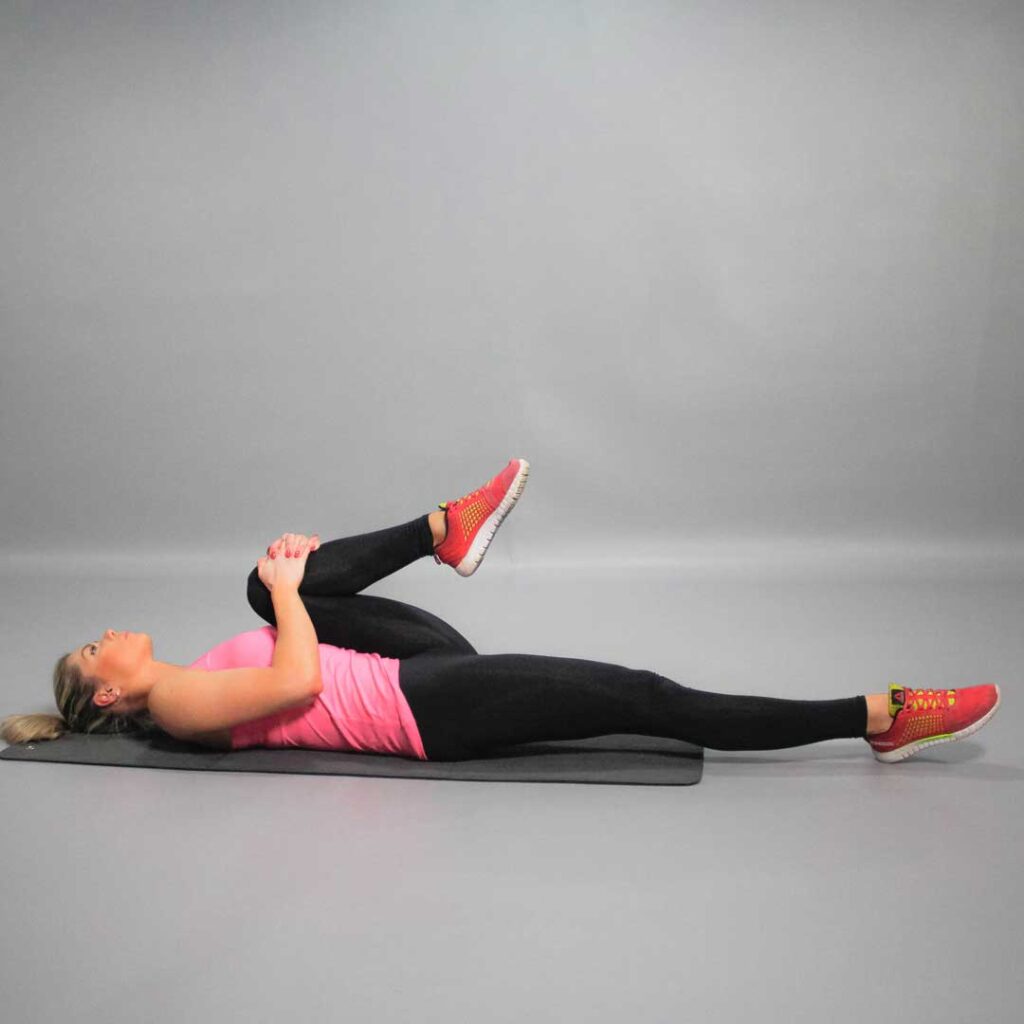
Raise one knee toward your chest, wrapping your hands around it to gently draw it closer. Hold the position for a few breaths, feeling the stretch in your hip and lower back. After a brief pause, switch to the other leg, repeating the movement to promote flexibility and release tension in the hips and thighs.
9. Reach and Bend

Reach one arm overhead, extending it as you lean to the opposite side, creating a gentle stretch along your side body. Hold the position briefly, feeling the elongation along your torso. Repeat the movement on both sides to enhance flexibility and alleviate tension in the waist and lower back.
10. Glute Stretch: Knee Press
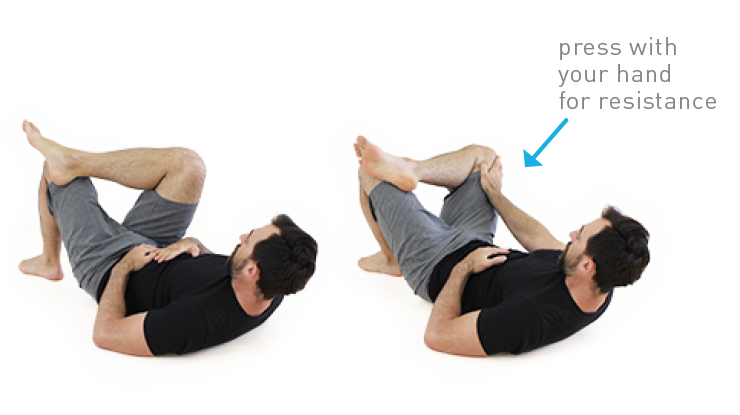
Crossing one ankle over the opposite knee, gently press the knee away from your body to stretch the outer hip and glute muscles. As you hold the stretch, focus on maintaining a tall, upright posture and breathing deeply to enhance relaxation. Feel the gentle stretch along the outer hip and glutes, allowing the muscles to gradually release tension. Remember to perform this stretch on both sides to promote balance and alleviate any discomfort or tightness in the hips and glutes.
Conclusion
Integrating desk exercises into your daily routine is a proactive step toward mitigating the health risks associated with prolonged sitting. By dedicating just a few minutes throughout your workday to stretching and moving, you can significantly improve your posture, reduce muscle tension, and enhance overall well-being. These exercises not only help alleviate the physical strain of sitting but also promote better focus and productivity. Remember, even small changes can lead to significant health benefits. So, stand up, stretch out, and make your workday healthier and more invigorating!
SOURCES
YMCA of Middle Tennessee
Healthline
Wellhub
SnackNation
HISTORY
Current Version
6th June, 2024
Written By:
ASMA AHMED